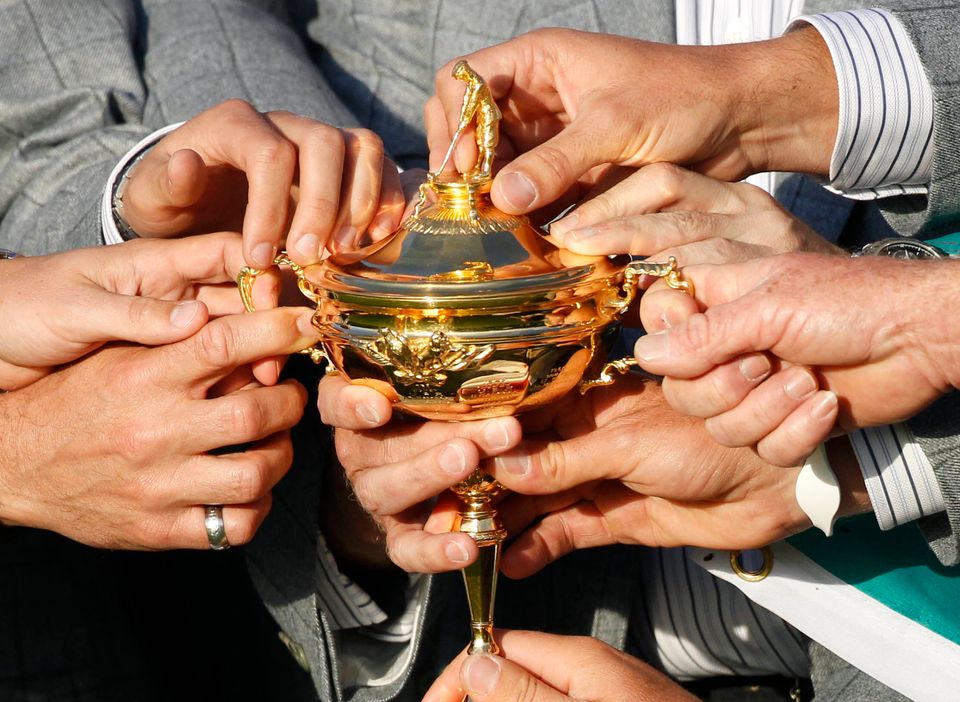By Adam Schupak, Golfweek
American Dave Marr was a Ryder Cup rookie in 1965 at Royal Birkdale Golf Club in England. When they raised the American flag and played “The Star-Spangled Banner,” his heart was in his throat. Marr’s partner in the alternate-shot competition? None other than Arnold Palmer. When Palmer teed up his ball at the first hole, his hands shaking, Marr said.
“If it shakes up Arnold Palmer, you can imagine what it was doing to me,” Marr said.
That’s Ryder Cup pressure. Or as Marr described how he felt: “I was like a guppy trying to get some air.”
There’s nothing in golf quite like the Ryder Cup. As one of my fellow scribes put it, “There’s drama, personalities, gamesmanship, patriotism, backbiting, second-guessing – it’s a journalist’s dream.”
When the 39th Ryder Cup gets under way on Sept. 28, new memories will be made.
We can only hope that the drama at Medinah compares favorably with the five greatest Ryder Cups of all time:
1937: U.S., 8-4 ... First Road Victory
You remember the 1937 Ryder Cup, don’t you? Well 75 years ago, Team U.S.A. hopped aboard a steamship for England and, guided by dapper captain Walter Hagen, became the first visiting team to take the Cup back home across the pond since the matches debuted a decade earlier. The U.S. team included six future World Golf Hall of Fame members, notably Byron Nelson, Gene Sarazen and Sam Snead. America’s domination of the Cup had begun.
To golf fans, it’s known simply as "The Concession."
The 1969 Ryder Cup hinged on the last singles match, between Jack Nicklaus and Tony Jacklin. It’s often forgotten that Jacklin had to hole a 50-foot eagle putt on the 17th hole at Royal Birkdale Golf Club just to remain alive in the match.
On the final green, both players faced birdie putts in the neighborhood of 20 feet. Jacklin was away. His putt ran out of gas 2 feet short of the hole. He marked. Then Nicklaus struck his putt firmly and it raced 5 feet past the hole. After he gamely holed the comebacker for par, Nicklaus bent over and picked up Jacklin’s coin, conceding the putt and assuring the first tie in the matches' history, with the U.S. retaining the Cup.
“I don’t think you were going to miss that putt but I wasn’t going to give you the opportunity,” Nicklaus said.
The pair left the green with their arms around each other's shoulders. That singular act of goodwill is roundly considered one of the grandest gestures of sportsmanship ever.
1985: Europe, 16.5-11.5 ... Europe's First Win
When did the Ryder Cup become the Ryder Cup? Answer: 1985. That’s when Europe finally broke the American stranglehold on the Ryder Cup with a surprisingly dominating victory at The Belfry. In 1979, the Great Britain and Ireland team was expanded to include all of Europe. The U.S. team kept on winning, although the Americans won a nail-biter in 1983. By now, captain Tony Jacklin had created a formidably united European team and, in Bernhard Langer, Sandy Lyle and Seve Ballesteros, could boast of three major winners.
Spaniards Ballesteros (3 points) and Manuel Pinero (4 points) led the way. Sam Torrance did the honors of sinking the winning putt for Europe’s first victory in 28 years. The triumph restored European pride and set the stage for the team’s future success. “It’s history, isn’t it?” Jacklin said. Yes, it was.
1991: U.S., 14.5–13.5 ... The War by the Shore
On the heels of the Gulf War, patriotic fever erupted at Kiawah Island’s Ocean Course. Arguably the most heated contest in Ryder Cup history came down to the last green of the last match. Germany’s Bernhard Langer had to hole a 6-foot putt to beat Hale Irwin. If Langer did so, the match would end in a tie and result in Europe retaining the trophy for two more years.
As Langer’s teammate David Feherty put it, "Even the tide stopped to watch."
Langer remembers a spike mark in his line. His putt grazed the right edge of the cup. The look of anguish on Langer’s face as the putt slid past the hole easily could serve as golf’s defining image for the agony of defeat. The miss enabled the U.S. to regain the Cup for the first time since 1983, and the biennial competition finally secured its place as one of golf’s great spectacles.
1999: U.S., 14.5-13.5 ... The Comeback
On the eve of the final day of the 1999 matches, U.S. captain Ben Crenshaw said he was a big believer in fate. I’ll never forget him waving his index finger, stating those words – "I have a good feeling about tomorrow. That's all I'm gonna say” – and rising from his seat at the press conference.
Did he know something we didn’t? The U.S. trailed 10-6 heading into singles at The Country Club in Brookline, Mass., but then won eight of the first nine matches. When Justin Leonard holed a 45-foot uphill birdie putt on the 17th green to rally from 4 down with seven holes to play - one of the greatest comebacks in sports, not just golf - the comeback was complete. It’s why I forgive his fellow teammates for storming across the green in jubilation, albeit prematurely as Jose Maria Olazabal stood by waiting to attempt his putt to halve the hole. It was an unforgettable moment, and it moved Crenshaw, that big believer in fate, to drop to his knees and kiss the green.
